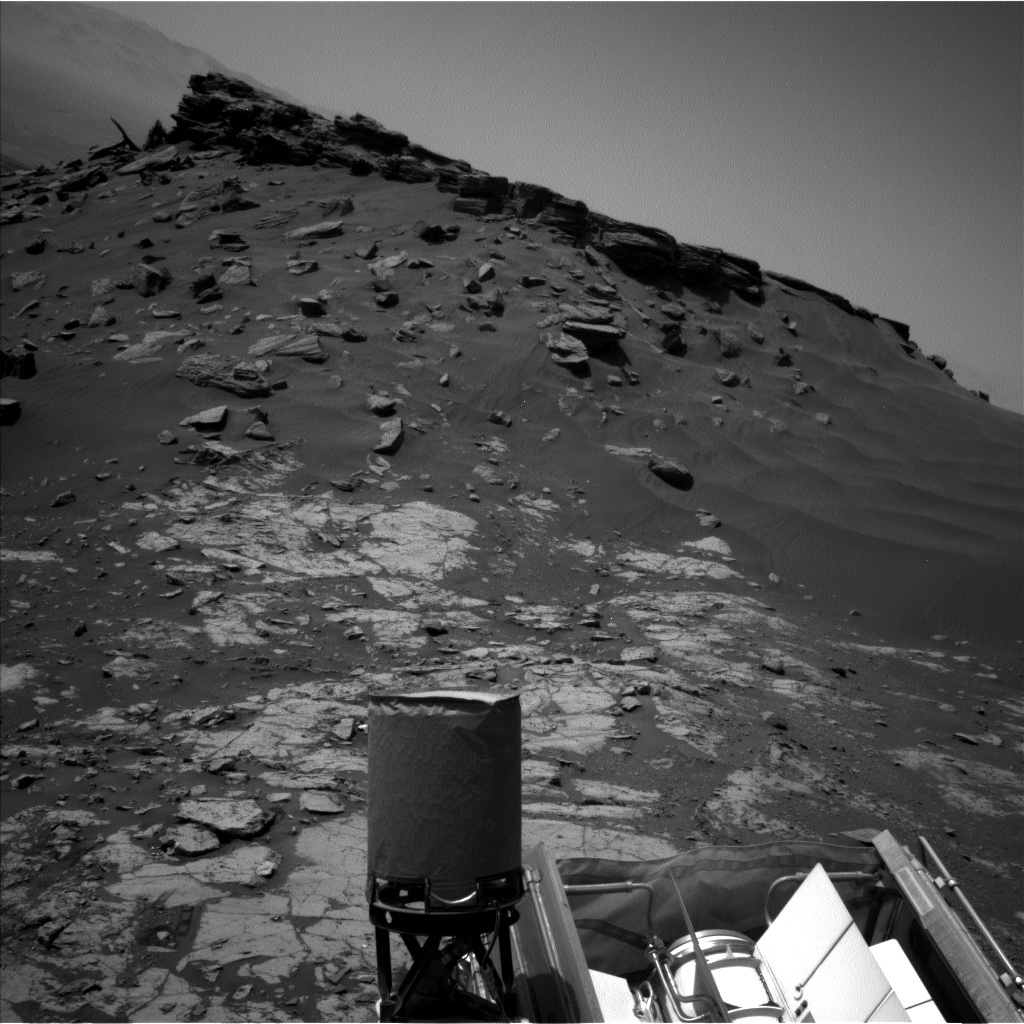2 min read

Curiosity is near the contact between the clay-bearing “Glen Torridon” unit and the “Greenheugh” pediment, and the rover is parked at a mission-record setting 26.9˚ tilt! This weekend, we are going to use the rover’s arm and remote sensing instruments to investigate the interesting textures and chemistry of rocks near the contact. On the first sol of this weekend’s plan, we will use ChemCam to collect chemical information from a bedrock target filled with nodules called “Garron Point” and a dark float rock that may have come from the Greenheugh pediment named “Mull of Galloway.” We will also DRT and collect APXS, MAHLI, and ChemCam observations of “Berwickshire,” a typical-looking piece of bedrock. APXS and MAHLI will also observe “Cairnbulg,” an area with nodules, and MAHLI will take some images of a vein named “Ross and Cromarty.”
The second sol of the plan includes a Mastcam multispectral observation of Berwickshire and a stereo Mastcam mosaic of the contact between the Greenheugh pediment and Glen Torridon. ChemCam will collect more data from “Ramasaig,” a dark vein near the rover, and “St. Monanas,” another piece of rock with interesting textures. The rover will also acquire some environmental science observations that will be used to understand atmospheric properties and search for dust devils.
On the third sol of the plan, Curiosity will drive towards some flat rock outcrops that are nearby, but which the rover will be able to reach without having to park at such a high tilt. The observations we collect from this area next week will help us decide whether these flatter rocks would be a good target to drill!
Written by Abigail Fraeman, Planetary Geologist at NASA's Jet Propulsion Laboratory







